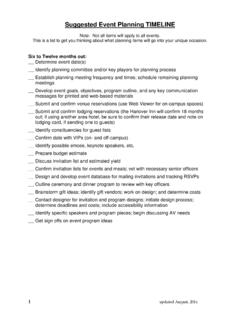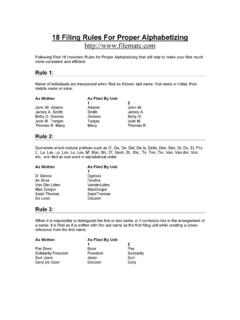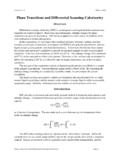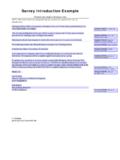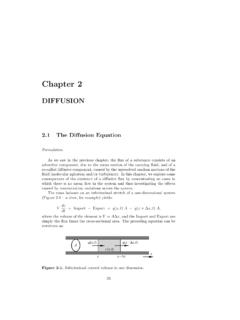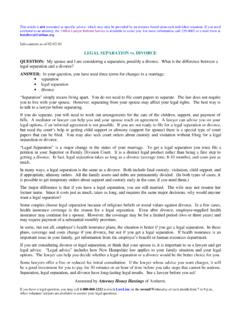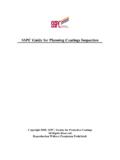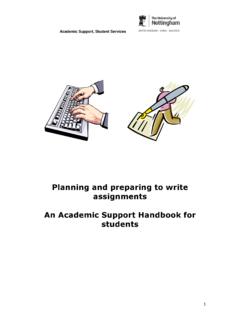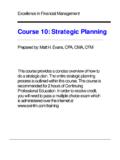Transcription of Preparing a Budget for a Research Grant Proposal
1 Preparing a Budget for a Research Grant Proposal Office of Sponsored Projects Faculty Education Working Group ~osp 2 Table of Contents 1. SOLICITATIONS 2. THE PURPOSE & IMPORTANCE OF A Budget 3. Budget LIFE CYCLE 4. Budget CATEGORIES A. Direct Costs B. Indirect Costs 5. Budget TYPES A. Modular B. Detailed 3 SOLICITATIONS The first step in the process of submitting a Proposal is to identify a solicitation. There are various names for Research funding solicitations. A few of the most common are: Research Funding Announcements (RFAs), Request for Proposals (RFPs), Proposal Announcements (PAs), and Funding Opportunity Announcements (FOAs); however, others exist.
2 Many opportunities can be found using the Office of Sponsored Projects website under Funding Opportunities. Once the solicitation has been selected and deemed appropriate for the PI and his/her particular Research project, the Budget process can be started. It is vital to read the solicitation in its entirety before starting. The solicitation will give guidelines for the funding Proposal and will state any budgetary restrictions. The Budget template is often provided as well. It is critical to determine whether there are any limitations in direct or indirect costs. PI salary, equipment and animal purchases are common direct cost expenses with restrictions.
3 Often, indirect cost limits are applied. Additionally, there are frequently total allowable funding limits, and cost share requirements, all of which must first be taken into consideration. Solicitations will also state whether the Budget is flexible. If the Budget is restricted as proposed it is absolutely imperative that the Budget be as accurate as possible. As a Budget is being developed for a Research Grant application and all of the relevant costs are put down on paper, many questions may arise. The best resources for answering these questions are the Office of Sponsored Projects (OSP), Research Grant Managers (RGMs) or Department Research Administrators (DRAs), and peers.
4 The appropriate RGM or DRA can be found by contacting OSP. Lastly, if a program has a limited submission requirement please follow the procedures under Limited Submission Funding Opportunities. 4 THE PURPOSE & IMPORTANCE OF A Budget A Budget is a key element of most Grant proposals and serves as a blueprint for spending the project s funds. An effective Proposal Budget outlines the proposed project in fiscal terms and helps reviewers to determine how the project will be conducted. Budget information about activities planned and personnel who will serve on the project provides reviewers with an in-depth picture of how the project will be structured and managed.
5 Budget details usually reveal whether a proposed project has been carefully planned and may ultimately be feasible. The proposed Budget must give an accurate assessment of all cost items and cost amounts that are deemed necessary and reasonable. It should be complete; that is, it should include all the costs of any personnel, supplies, and activities required by the project. The project needs to be feasible within the Budget presented. If major cost areas are omitted or underestimated, the project, as proposed, will not be considered feasible. Over the course of the project many different stakeholders are going to review the Budget , and refer back to it.
6 The decisions made now at the Proposal stage will continue through the life of the Grant , and others will make decisions based on it at future stages (see Budget Life Cycle on the following page); therefore, it is time well spent to prepare a reasonable Budget . A reasonable Budget is one that is based upon actual costs when possible. The Budget will become an integral part of the obligation to the sponsor, particularly regarding time/effort commitments. It will evolve into a useful management tool during negotiations, and, if the project is funded, the Budget will become the financial plan used by the funding agency to provide support.
7 When variances between the Budget and actual expenses are indicative of a change in scope, this may require sponsor approval. Often required with the Budget is a narrative justifying budgeted items. This Budget justification will vary depending on the sponsor's Budget format. 5 Budget LIFE CYCLE 6 Budget CATEGORIES Cost Groups Most budgets are composed of two kinds of costs: direct costs and indirect costs. Direct costs are costs that can be identified specifically with a particular sponsored project, an instructional or institutional activity, or one that can be directly assigned to such activities relatively easily with a high degree of accuracy.
8 These costs include expenditures for project personnel salaries and employee benefits, supplies, travel, equipment, telephones, and postage. All direct cost items must be included in the Budget . It is important to ensure that all costs meet the criteria, of allowable, allocable, and reasonable as defined by the Federal Cost Principles (OMB Circular A-21). Indirect costs are incurred by a grantee that cannot be identified specifically with a particular project or program. They include the costs of many services the college provides (procurement, administrative, library, OSP, Technology Transfer Office (TTO), custodial, accounting/finance, and security) as well as building maintenance and depreciation, and utilities.
9 These costs are often referred to as the cost of doing business , business overhead, or Facilities and Administrative Costs (F&A). In accordance with dartmouth s negotiated agreement with the Department of Health and Human Services, the following predetermined F&A rates should be used: ~osp/ . 7 Budget TYPES There are different Budget types and the solicitation should be reviewed to determine which format is required for a particular funding opportunity. NIH offers two different formats for Budget submissions, either Modular or Detailed, depending on the total direct costs requested and the activity code used (R01, R03, R21, R34, K01, T32, F32, U01, P30, etc.)
10 To determine what Budget format to use, see the flowchart below. 8 NIH Modular Budgets Modular budgets are simplified; therefore, detailed categorical information is not to be submitted with the application. If using a modular Budget format applicants request funds in lump sums of $25,000 modules. In order to determine how many modules to request, subtract any consortium F&A from the total direct costs, and then round to the nearest $25,000. Consider creating a detailed Budget for future use; include salaries, equipment, supplies, graduate student tuition, etc. for every year of funds requested. While the NIH will not ask for these details, they are important to have on hand when calculating the F&A costs base, writing the justification, managing funds, and for audit purposes.
